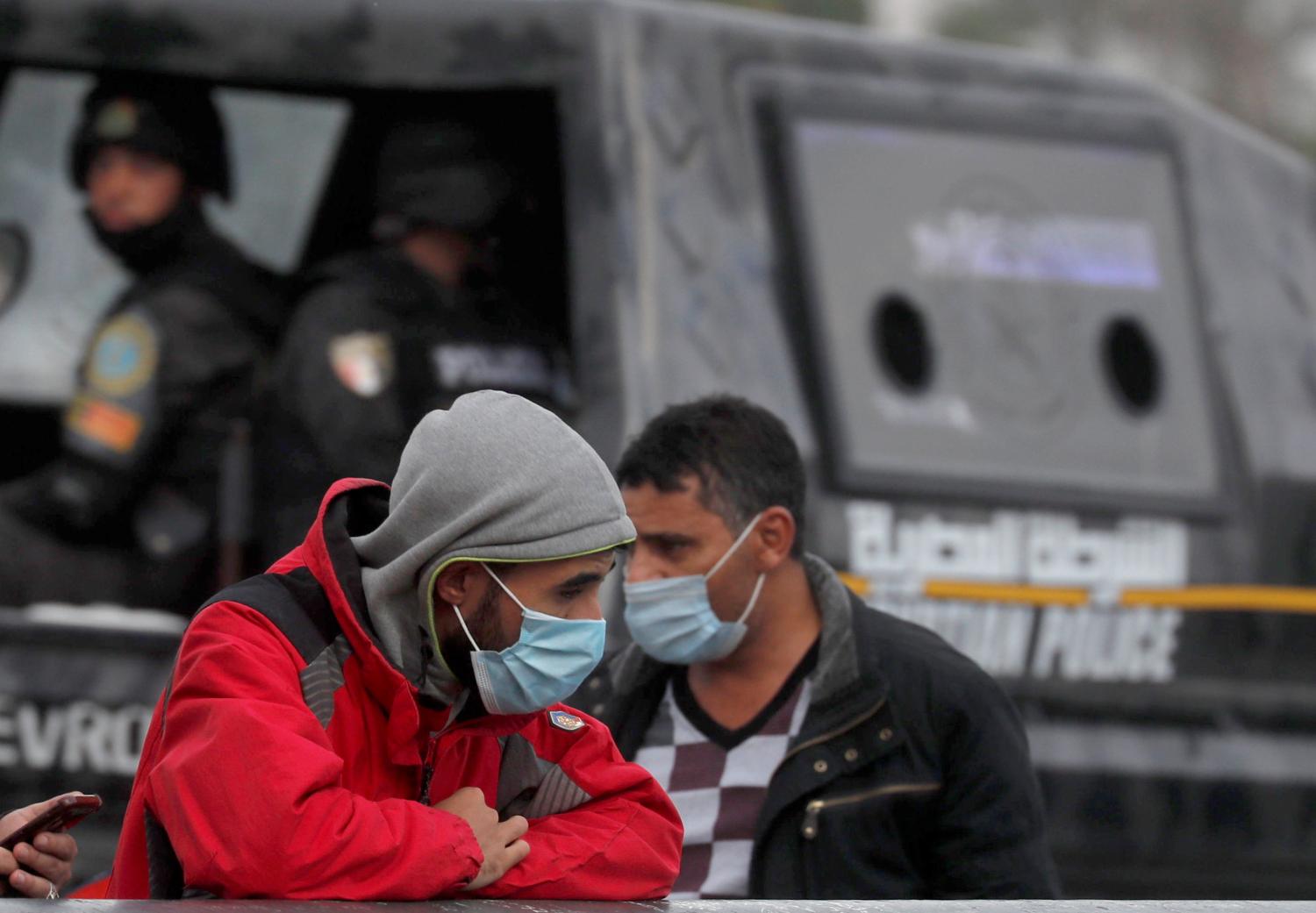Content from the Brookings Doha Center is now archived. In September 2021, after 14 years of impactful partnership, Brookings and the Brookings Doha Center announced that they were ending their affiliation. The Brookings Doha Center is now the Middle East Council on Global Affairs, a separate public policy institution based in Qatar.
In the early stages of the pandemic, Middle East and North Africa (MENA) governments imposed strict public health measures designed to limit the spread of the COVID-19 virus domestically. These measures helped keep case levels in check and low compared to other regions of the world. The graphs below track the stringency of governmental public health measures and related closures against new daily cases of COVID-19 in a sample of MENA countries. Here, the stringency of public health measures is represented by data from the Oxford COVID-19 Government Response Tracker’s Stringency Index, which ranks the strictness of government pandemic responses on a scale of zero to 100. On the scale, the strictest governmental response – representing a complete lockdown of borders, schools, and the broader economy – rates 100, while zero represents no governmental intervention. This index does not reflect the efficacy of these closures or popular compliance with them. Data on new cases is taken from Our World in Data database.
By early summer 2020, MENA governments were under significant pressure to reopen their economies and ease the economic strains that such closures imposed on businesses and citizens. This required threading a risky and complex range of options. Some countries decided to open their economies more rapidly, seeking to limit the economic cost to private businesses and affected workers but risking, in turn, a resurgence of the virus. Others have drawn out the closures, keeping the economic life more restricted to help keep the virus at bay. The result has been a marked increase in cases in many, but not all, MENA countries. In some countries (such as Tunisia and Jordan), the growth in new cases clearly tracks a loosening of restrictions, while other trajectories are more complex. Overall, however, most MENA countries have seen new cases grow over spring and summer 2021, with most governments responding with some mix of more stringent closures.
Sources:
Thomas Hale, Sam Webster, Anna Petherick, Toby Phillips, and Beatriz Kira, “Oxford COVID-19 Government Response Tracker,” Blavatnik School of Government, Oxford University, 2020. https://www.bsg.ox.ac.uk/research/research-projects/oxford-covid-19-government-response-tracker.
Max Roser, Hannah Ritchie, Esteban Ortiz-Ospina, and Joe Hasell, “Coronavirus Pandemic (COVID-19),” OurWorldInData.org, accessed December 7, 2020, https://ourworldindata.org/coronavirus.
Paul Dyer is a policy analyst with Brookings Doha Center, and Isaac Schaider and Andrew Letzkus are data analysts with the Brookings Doha Center.



